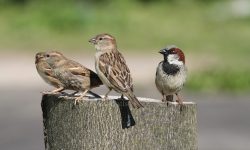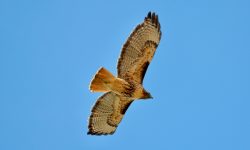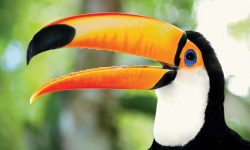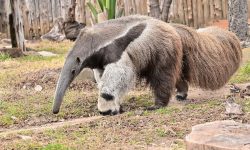Introduction to the Cassia Crossbill
Idaho is home to many unique wildlife species, but the Cassia Crossbill stands out as the state’s only endemic bird. This rare finch has evolved specialized traits that make it perfectly adapted to its limited habitat. In this article, we explore its appearance, habitat, behavior, and the crucial conservation efforts aimed at preserving this extraordinary bird.
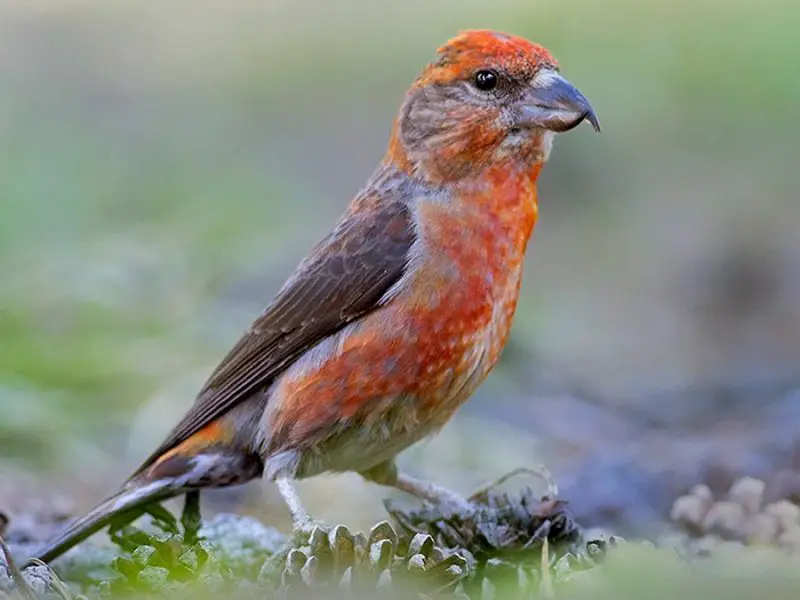
Appearance and Key Features
Distinctive Crossed Bill
One of the most striking and defining characteristics of the Cassia Crossbill is its uniquely crossed bill tips. Unlike most birds whose bills align straight, the tips of this finch’s upper and lower mandibles cross each other like a pair of tiny pincers. This extraordinary adaptation is perfectly suited for prying open the tough, resinous cones of Lodgepole Pine trees, allowing the bird to reach and extract the seeds hidden deep inside. This specialized bill shape is the result of a long evolutionary partnership between the Cassia Crossbill and its food source, making it a textbook example of co-evolution. The bill’s design not only sets it apart visually but also plays a crucial role in the bird’s survival and feeding efficiency.
Plumage and Size
In terms of coloration, Cassia Crossbills exhibit subtle sexual dimorphism. Males typically show warm reddish plumage across their head, chest, and back, which can range from bright scarlet to a softer rusty red. Females, by contrast, tend to wear more muted olive-green or yellowish-brown feathers, providing them better camouflage among the pine needles. Both sexes share a robust, compact body built for agility in dense forests, with a strong neck and powerful bill muscles to manipulate the pine cones. Their size is relatively small, typical of finches, but their unmistakable bill and coloration make them easy to identify for attentive birdwatchers.
Habitat and Distribution in Idaho
Restricted Range in Southern Idaho
The Cassia Crossbill’s habitat is incredibly specialized and geographically limited. This rare bird is found exclusively in the South Hills and Albion Mountains of southern Idaho, making it one of the most range-restricted birds in North America. These mountainous regions are dominated by dense Lodgepole Pine forests, which form the backbone of the Cassia Crossbill’s survival. The trees provide not only a vital food source in the form of cones but also essential shelter and safe nesting sites. This close relationship between the bird and its forest habitat creates a delicate ecosystem where both depend heavily on one another.
Vulnerability of Its Habitat
The Cassia Crossbill’s narrow range, while unique, also makes it extremely vulnerable to environmental disturbances. The Lodgepole Pine forests it calls home face multiple threats that could dramatically impact the bird’s survival. Wildfires, a natural yet increasingly intense force, can quickly destroy large swaths of these pine habitats. Climate change adds uncertainty by altering temperature and precipitation patterns, which affects forest health and cone production. Moreover, infestations by mountain pine beetles have decimated many Lodgepole Pine stands, further reducing food availability. Because the Cassia Crossbill’s entire population depends on these specific forests, any significant habitat loss or degradation poses a direct and urgent threat to this remarkable bird.
Behavior and Diet
Specialized Feeding Habits
Cassia Crossbills are specialist feeders. Their uniquely crossed bills allow them to expertly pry open the tough cones of Lodgepole Pines to access seeds that are unreachable to most other birds. This remarkable adaptation not only reduces competition for food but also tightly links their survival to the availability and health of these pine cones. Without a sufficient supply of cones, their ability to feed and thrive is severely compromised.
Social and Breeding Behavior
During the breeding season, Cassia Crossbills tend to form small social groups within their dense forest habitat. Their breeding and feeding cycles are intricately connected to the life cycle of the Lodgepole Pine trees, as the timing of cone production directly affects their reproductive success. Nesting sites are typically located in these forests, where the birds rely on the surrounding environment to provide both food and shelter for raising their young.
Conservation Status and Efforts
Current Threats
The survival of the Cassia Crossbill is jeopardized by several significant threats. Habitat loss due to wildfires can rapidly destroy large areas of Lodgepole Pine forests that the bird depends on. Logging activities further reduce the availability of mature pine stands necessary for feeding and nesting. Additionally, insect outbreaks, particularly infestations by mountain pine beetles, have devastated many pine forests, directly impacting the bird’s food source. Climate change compounds these issues by altering weather patterns and forest health, creating unpredictable challenges for this already fragile ecosystem.
Protection Measures
To safeguard the Cassia Crossbill, conservationists prioritize maintaining healthy Lodgepole Pine forests. Efforts include wildfire management practices designed to reduce the severity and spread of fires, reforestation projects to restore damaged areas, and controlling insect populations that threaten tree health. Ongoing monitoring of Cassia Crossbill populations helps track trends and identify emerging risks. Public awareness campaigns also play a vital role in supporting conservation by educating communities about the bird’s unique status and the importance of preserving its habitat.
Why the Cassia Crossbill Matters
Symbol of Idaho’s Natural Heritage
The Cassia Crossbill stands as a powerful symbol of Idaho’s unique natural heritage. It represents the delicate balance between evolution and ecology that has unfolded over thousands of years in this region. Protecting this remarkable bird means more than saving a single species; it means preserving the complex web of relationships among plants, animals, and habitats that sustain life in Idaho’s mountain forests. The survival of the Cassia Crossbill reflects the health of the entire ecosystem it inhabits.
A Living Example of Adaptation
Beyond its symbolic value, the Cassia Crossbill offers scientists and birdwatchers a rare window into evolutionary specialization. Its distinctive crossed bill is a fascinating adaptation that demonstrates how species can evolve precise traits to thrive in very specific environments. This bird serves as a living classroom for understanding co-evolution and biodiversity. Its preservation not only enriches Idaho’s wildlife but also advances scientific knowledge and inspires conservation efforts worldwide.
Conclusion
A Testament to Idaho’s Biodiversity
The Cassia Crossbill is far more than just an endemic bird; it embodies the rich biodiversity that defines Idaho’s wild landscapes. Its existence highlights the incredible adaptability of nature, showcasing how species evolve and thrive in unique ecological niches. This tiny finch represents a larger story of survival and evolution that unfolds across Idaho’s forests.
The Urgent Need for Conservation
Ensuring the Cassia Crossbill’s continued survival requires dedicated conservation efforts combined with strong public awareness and support. Protecting its limited habitat, managing forest health, and mitigating environmental threats are essential steps to preserve this remarkable bird for future generations. For anyone who cherishes the natural world, the Cassia Crossbill stands as a powerful symbol of hope, resilience, and the enduring beauty of Idaho’s forests.


